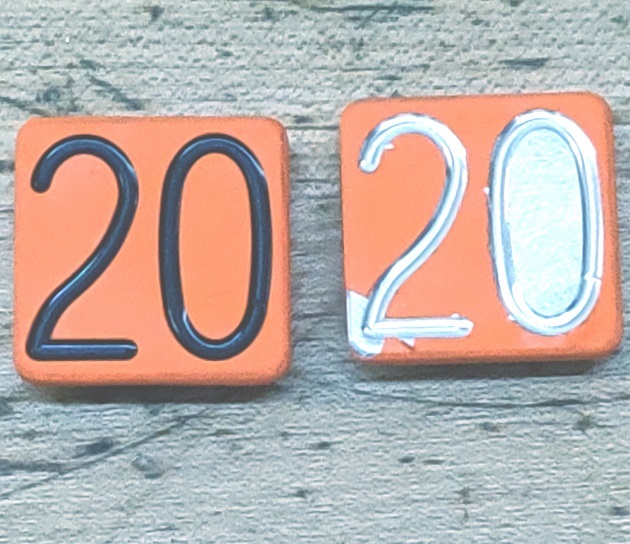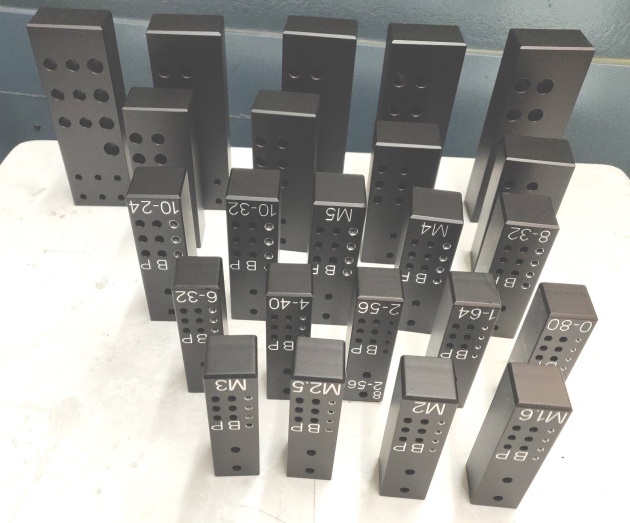
We are switching from cutting taps to formed taps. Formed taps produce a stronger thread without chips in aluminum.
Our current tap storage is putting taps into drawers. The tap is kept inside the case and stored with the tap bit and tap gauge in the same drawer slot.
We cannot mix the form taps with the cutting taps due to different pilot holes. I took this opportunity to improve our tap storage.

There were several issues with our old storage. When a tap breaks, the case does not always get discarded. You think you have more taps than you actually do! Tap drills can be accidentally put in the wrong slot. This leads to constantly checking the tap drill. The drawers are usually closed so it is hard to see when taps are getting low.
I iterated thru several designs. My first design was too 'hard coded'. I didn't really like it. What if I had to add a tap size? I would have to redo the whole thing.
My second design was a little too delicate. The concept worked. It just need to be stronger. I added the flag so I would quickly know what tool holder the tap or tap drill was in.
My final design was to drill each carrier into a piece of wood. I could easily add tap sizes and it was pretty solid. I could change length or setup as needed. The wood does a good job of drawing the moisture off of the Bilz QC tap holders.
I then changed my tool flag to a magnetic design so they could live on the mill when not being used. I made several prototypes until I had what I wanted. The black ABS below shows up very nicely with the orange paint, but the paint was not very robust and the magnets did not hold well in the ABS.

Ideally these flags would have been anodized, letters milled, and clear coated. But I settled on rattle can paint. They turned out pretty well!

I made a small tool to press in the magnets. These must be assembled with the magnetic poles in the correct orientation so the magnets can be stacked. The magnets are pretty strong so I added the lip for removal leverage. This also differentiates a 6 from a 9.

There is a small recessed pocket for the glue clearance in the bottom of the blind hole. It just takes a small bit of glue to hold the magnet. Too much causes hydraulic lock.
For machining the tap holders, I machined out each tap blank size. The tap shanks will be the same size. They were then painted. The lettering, drill holes and gauge hole were all added. Then a quick shot of clear coat to add some hardness to the paint!

These will store 1X thread gauge, 3X drills, 3X plug taps, and 3X bottom taps per holder. As you can see it is very easy to take inventory and see where a tap size is short on tool. Now I just need to fill them up with tools!

When I started researching tap storage on the internet. A comment in a forum was something to the effect: "Don't overthink it. I've stored my taps in my wife's old tupperware for 20 years."
We'll I've thought about it pretty dam hard . This takes a lot of time off our previous tap change over time! It also helps getting the taps and drill back home reliably! This is a decent size chunk of making low volume prototype parts.

Thanks for looking! There are more pics, CAD, and CAM here...



